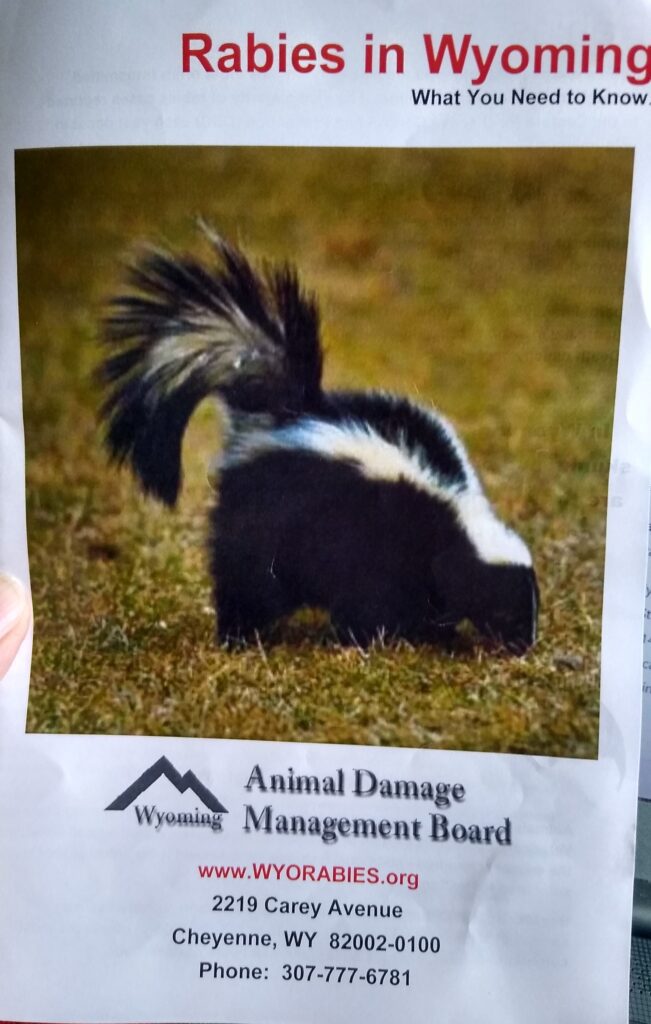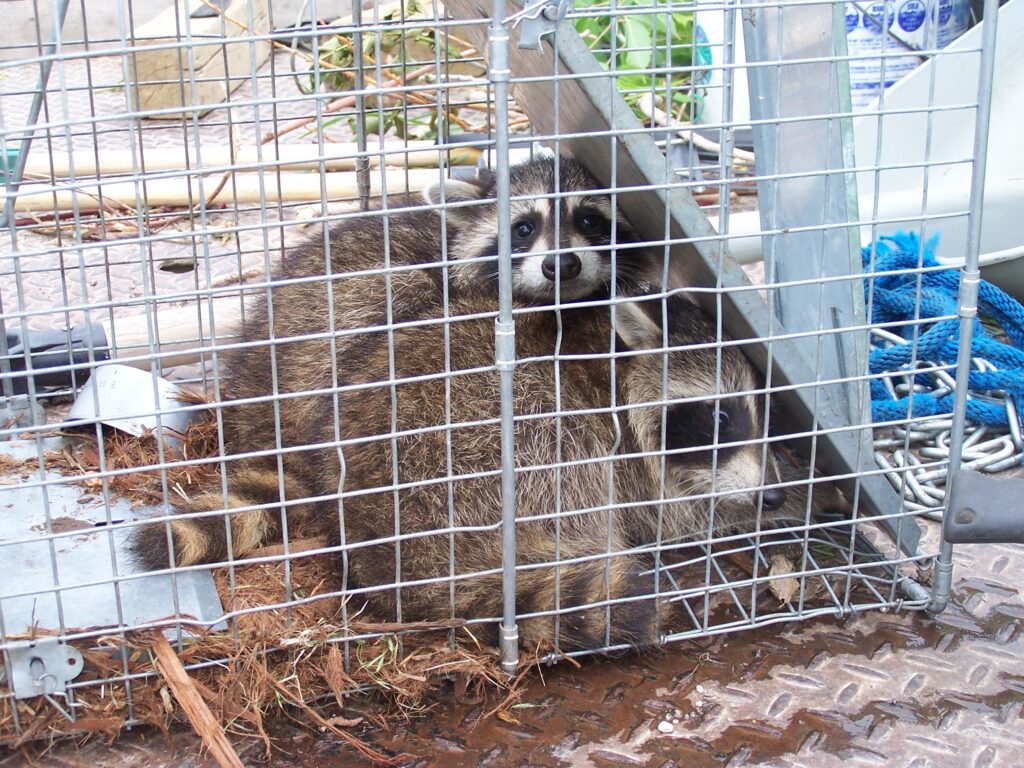News
Be Aware of Rabies as the Weather Warms

The Sheridan County Predator Management District (SCPMD) and the Wyoming Animal Damage Management Board is distributing fliers title “Rabies in Wyoming, and What You Need to Know” throughout the country. Cole Benton , President of the Board, said they are dropping these fliers off at businesses in Sheridan County this spring. He said that in the three-county area, Sheridan, Johnson and Campbell Counties, Sheridan has the highest incidents of rabies.
According to the flyer, the rabies virus causes an acute encephalitis in all warm-blooded hosts and the outcome is almost always fatal, especially in humans.
However, it can be successfully prevented if treatment is started promptly after exposure, but it can be very expensive. In the United States, PEP consists of a regimen of one dose of immune globulin and four doses of rabies vaccine over a 14-day period. Rabies immune globulin and the first dose of rabies vaccine should be given by your health care provider as soon as possible after exposure. Current vaccines are relatively painless and are given in your arm like a flu or tetanus vaccine; rabies vaccines are not given in the stomach.
Benton said this about rabies in the county
He said that people are often not aware that rabies is a problem, and many people don’t realize that even cattle and horses can get rabies. He added that animals don’t have to be foaming at the mouth, there are other symptoms. He added that any time one sees raccoons and skunks in the daylight, as they are mainly nocturnal animals, there is a good possibility that they may have rabies.
According to the flyer, if one has been in contact with any wildlife or unfamiliar animals, particularly if you’ve been bitten or scratched, you should talk with a healthcare or public health professional to determine your risk for rabies or other illnesses. Wash any wounds immediately with soap and water and then plan to see a healthcare provider.
It is important to remember that rabies is a medical urgency, but not an emergency, but decisions should not be delayed.
Although most people think of skunks, raccoons and bats as being the main carriers of rabies, other animals can transmit the disease. Cole Benton, chairman of the Sheridan County Predator Management District, shared this incident.

The first symptoms of rabies in animals may be nonspecific and include lethargy, fever, vomiting, and anorexia. Signs progress within days to cerebral dysfunction, cranial nerve dysfunction, ataxia, weakness, paralysis, seizures, difficulty breathing, difficulty swallowing, excessive salivation, abnormal behavior, aggression, and/or self-mutilation. Stray cats and barn cats can carry rabies, as can stray dogs.
Dr. Sarah Schreiber of Moxey Schreiber Veterinary Hospital in Sheridan said that there is a lot of rabies in the area in the skunks, but large animals also contract the disease.
Schreiber added that at her vet clinic, they have had two horses, two cows and two calves and maybe even a llama that tested positive for rabies.
She added that for large animals, if they do contact it it is a death sentence. She said,
Parents should warn their children to be careful around stray animals, and all pets should be vaccinated for rabies as recommended by a veterinarian. Currently, in Sheridan County, it is recommended to have pets vaccinated every three years.

One should not leave dog or cat food outside where it may attract raccoon or skunks that may be ill. Even bird feeders and outdoor fish ponds in the summer can attract unwanted animals, like raccoons.
Benton said that about March is when they want people to be aware of rabies, and up until the cold weather hits again.
Skunk and bat rabies are endemic to Wyoming but any mammal can become infected.
If you are bitten by an animal you should wash the wound thoroughly with warm water and soap and seek medical advice from a health care provider about your need for rabies post exposure prophylaxis treatment.
If you wake up and find a bat in your room or a child’s room, consult a health care provider to discuss your need for rabies post exposure treatment. Bat’s teeth are so small you may have been bitten and did not even know it.
You can’t tell if an animal has rabies by just looking at it—the only way to know for sure if an animal (or a person) has rabies is to perform laboratory testing.
The best thing to do is to never feed or approach a wild animal. Be careful of pets that you do not know. If you see a stray dog or cat, don’t pet it. This is especially important if you are traveling in a county where rabies in dogs is common. And if any animal is acting strangely, call your local animal control officer for help. Some things to look for are: general sickness; unusual behavior; excessive drool; a wild animal that appears tamer than you would expect; an animal that’s having trouble moving or may even be paralyzed; a bat that is on the ground.

If you’ve been in direct physical contact with any wildlife or unfamiliar animals, particularly if you’ve been bitten or scratched, you should talk with a healthcare or public health professional to determine your risk for rabies or other illnesses. One important factor in deciding if you should receive rabies vaccination, will be if the animal you were exposed to can be found and tested for rabies or held for observation. If you need rabies vaccination, it should be started soon after exposure; so talk to a healthcare provider right away to determine if you need it.
For questions about rabies, contact Dr. Emily Curren at 307-777-5825 or emily.curren@wyo.gov. Or go to www.WYORABIES.org. or call Wyoming Department of Health at 1-888-996-9104, or pick up a flyer at an area business.

